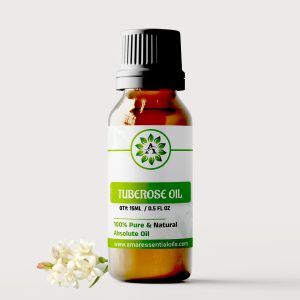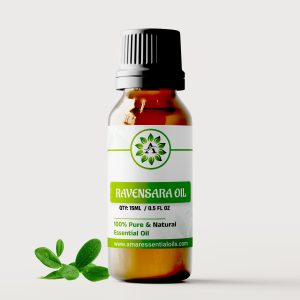My Cart
Subtotal: $19.00
The rose has traditionally been called the 'Queen of Flowers' and in aromatherapy, Rose oil is often thought of as the queen among essential oils. Nicholas Culpeper, in his herbal, described the rose as being governed by Venus, and the area in which Rose Oil Manufacturer is used in aromatherapy, in preference to all other oils, is in treating disorders of the female reproductive system.
Evening Primrose is characterized by its tall, erect stem, which can reach up to six feet in height. Its lance-shaped leaves grow alternately along the stem, providing an elegant backdrop to its striking blossoms. The flowers, with their delicate petals, unfurl in the evening, releasing a subtle, sweet fragrance that attracts pollinators like moths and bees.
Across time, the rose has been hailed as the regal 'Queen of Flowers,' and in aromatherapy circles, rose oil stands out as the ultimate essential oil. As per Nicholas Culpeper's herbal texts, the rose symbolizes Venus, embodying beauty and femininity. Notably, rose oil is revered in aromatherapy, valued especially for its effectiveness in supporting women's reproductive health.
Rose de Mai oil, also known as May rose oil or Rose otto, is a highly prized essential oil extracted from the petals of the Rosa centifolia, a variety of rose native to the Grasse region of France. Renowned for its rich floral aroma and potent therapeutic benefits, Rose de Mai oil holds a special place in the world of natural beauty and holistic wellness.
Rosewood oil is extracted from the chipped wood part of the plant Aniba rosaeodora of Lauraceae family and is considered as an effective cure for various skin infections. As a colorless to pale yellow liquid, it comes with characteristic and sweet odor.
Known for its invigorating scent, Rosemary oil emanates a woody and herbaceous aroma. Its composition is rich in compounds such as cineole, camphor, and pinene, contributing to its anti-inflammatory, antimicrobial, and antioxidant properties.
Rose geranium oil is a fragrant essential oil known for its floral aroma with hints of citrus and mint. It is widely used in aromatherapy, skincare, haircare, and holistic healing practices. The oil is extracted through steam distillation, capturing its potent therapeutic properties.
Rosehip seed oil, also known as rosehip oil, is extracted from the seeds of the wild rose plant (Rosa canina). This oil has gained popularity for its exceptional skincare properties. The oil is typically extracted through a cold-pressing method, preserving its nutritional integrity.
Chamomile Roman traces its origins to Western Europe, particularly to regions like England, France, and Spain. It thrives in temperate climates and is characterized by its delicate, daisy-like flowers and gentle fragrance. Cultivation typically involves well-drained soil and ample sunlight, making it adaptable to various growing conditions.
Cedarwood Atlas essential oil, often referred to as "Moroccan" Cedarwood Oil, stands apart from American varieties like Virginia and Texas Cedarwood oils in both chemical composition and sensory characteristics. Derived from the Cedrus atlantica tree, a type of pine, it differs significantly from American and East African Cedars, which are actually species of Cypress. The Atlas Cedar is thought to have its roots in the renowned Lebanon Cedars, which still grow wild in Lebanon and Cyprus, where they are now protected from being harvested for their oil.
Ravensara Oil, often referred to as the "oil that heals," is extracted through steam distillation from the aromatic leaves of the Ravensara aromatica tree. Unlike its namesake, the Ravensara tree is distinct from the unrelated Ravensara genus native to the laurel family.
Valerian root Oil is extracted from the roots of the valerian plant (Valeriana officinalis), which has been used for centuries for its medicinal properties. Historically, it was used in ancient Greece and Rome as a remedy for various ailments, including insomnia, nervousness, and headaches.
Tagetes oil is renowned for its distinctive aroma, characterized by its sweet, fruity, and slightly citrusy fragrance with hints of floral notes. This unique scent makes it a popular choice in perfumery and aromatherapy, adding depth and complexity to blends
Sugandh Mantri is a fragrant perennial herb native to Assam, as well as the lower altitudes of Arunachal, Nagaland, and Tripura in India. It boasts a short stem and a slow growth rate. The leaves are characterized by their radical arrangement, sheathing bases, long petioles, and sagittate-cordate shape.
Recently viewed items
Cassia oil is derived from the Cinnamomum cassia tree, a member of the Lauraceae family. This evergreen tree is indigenous to China and Burma and is commonly referred to as Chinese Cinnamon. The Cassia tree, characterized by its slender form, can reach heights of up to 20 meters. It features robust, leathery leaves and delicate white blossoms.
Amyris oil, derived from the Amyris balsamifera tree native to Haiti and other parts of the Caribbean, is a lesser-known yet highly prized essential oil in the world of aromatherapy and natural remedies. Distilled from the wood of the Amyris tree, this oil boasts a rich history and a plethora of therapeutic properties that have garnered attention from enthusiasts and practitioners alike.
The process of steam distillation extracts this essential oil from the dried leaves of Barosma Betulina, a herb flourishing abundantly in South Africa's wild terrain. Various pharmaceutical products such as tinctures and oleoresins are derived from it. However, only a minute portion of the harvested buchu leaves undergoes distillation to produce essential oil.





















